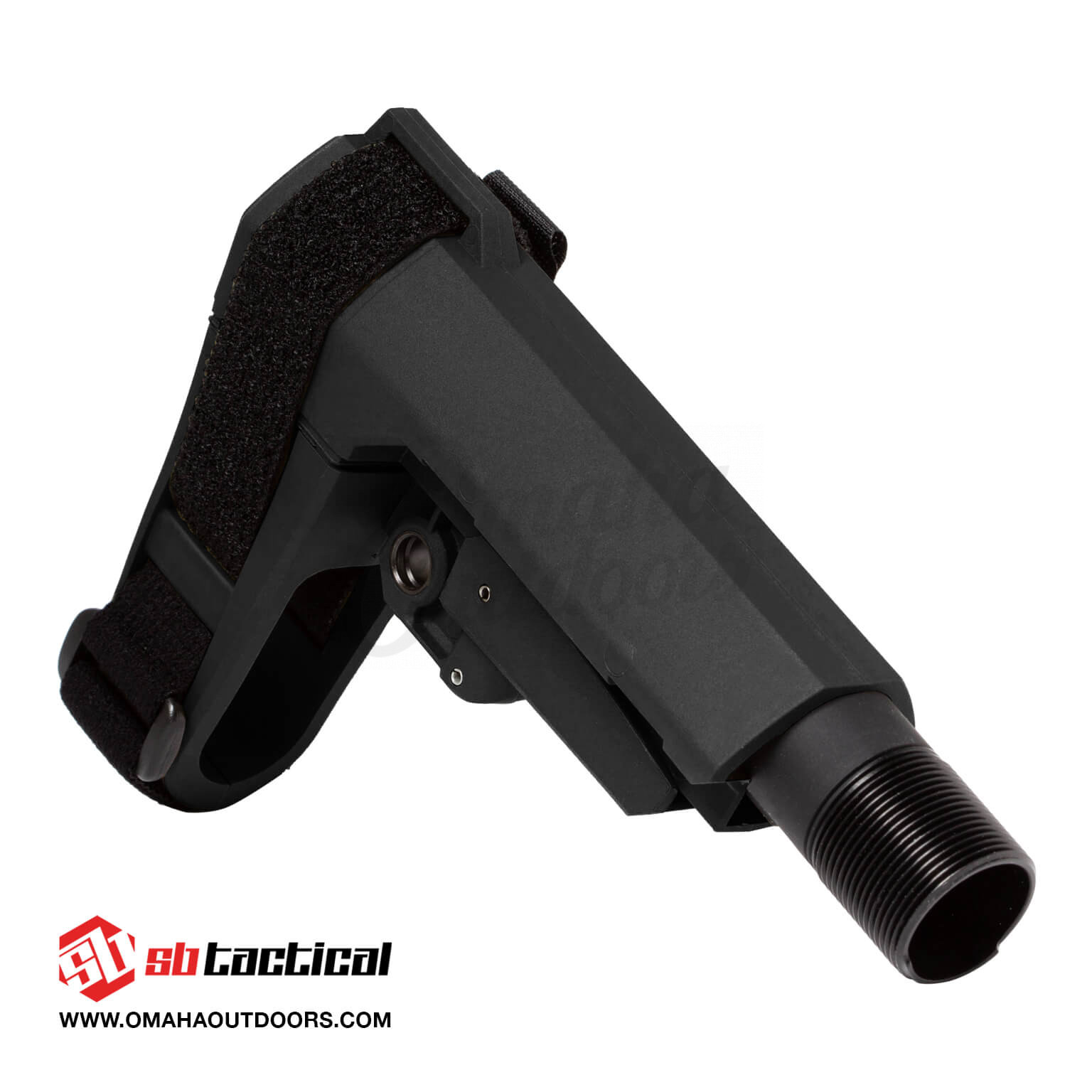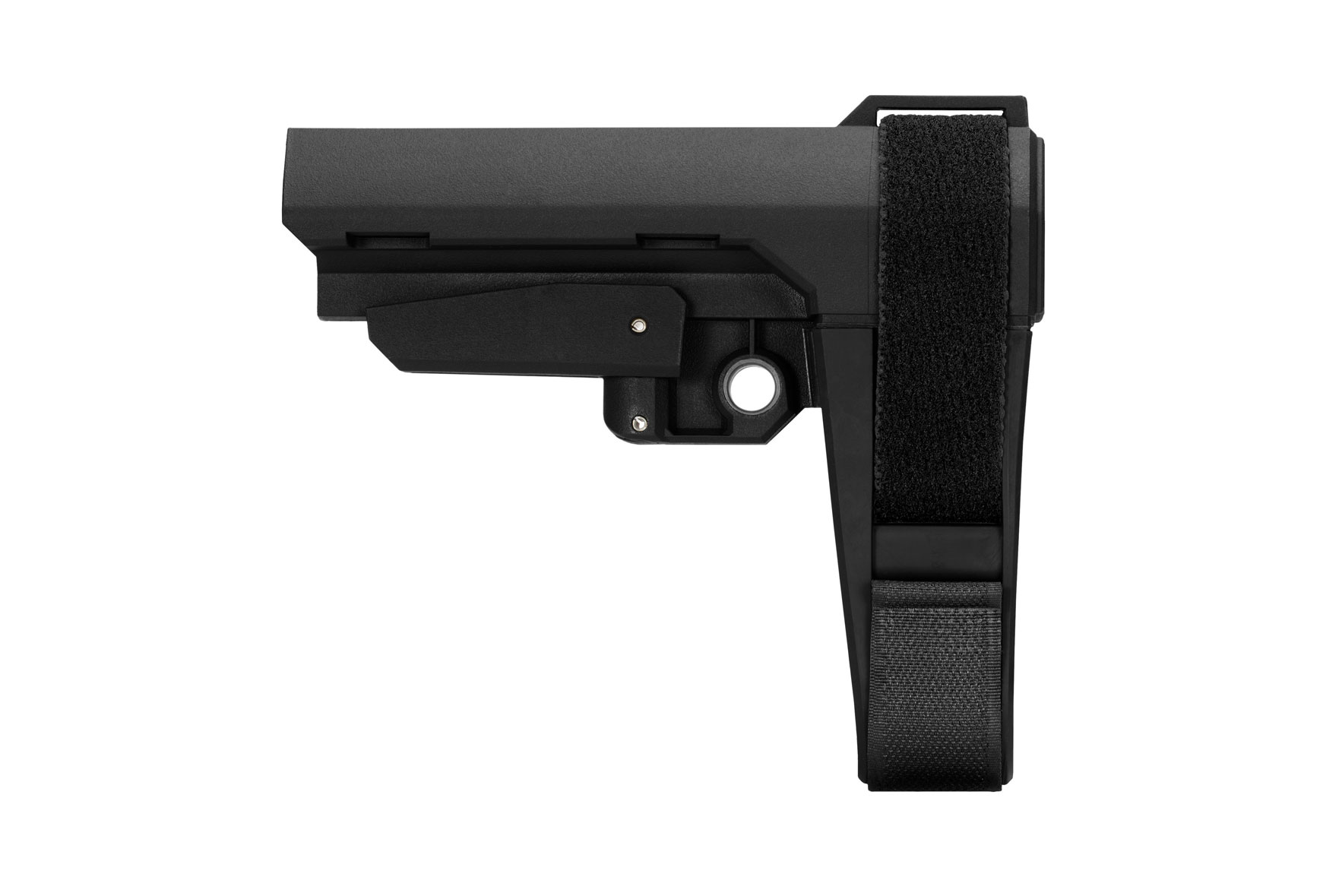Pistol Brace Legal Status & Updates: What You Need To Know 2024
Are pistol braces a legal gray area, or are they a clear-cut case of legality? The landscape surrounding pistol braces is a minefield of legal interpretations, court rulings, and evolving regulations, making it a challenge for gun owners to stay informed and compliant.
The question of whether a pistol brace is legal or not has become a focal point of debate within the firearms community. The fundamental design of a pistol brace, often intended to provide stability and improve accuracy, has been subjected to scrutiny by regulatory bodies like the Bureau of Alcohol, Tobacco, Firearms and Explosives (ATF). At its core, the debate revolves around whether these attachments transform a pistol into an unregistered short-barreled rifle, subject to the stringent regulations of the National Firearms Act (NFA). The legal definition of a "rifle," including the criteria for shouldering a firearm, has been a key factor in this ongoing controversy. The ATF has issued various rulings, including the controversial "Final Rule," aiming to define the parameters under which pistol braces are considered legal or illegal. These rules have been met with legal challenges, resulting in a series of injunctions and conflicting court decisions that have created a state of uncertainty.
The evolving legal status has impacted numerous gun owners. The initial intent of pistol braces was to offer a way for individuals with disabilities or those with limited arm strength to handle a handgun more effectively. These braces attach to the forearm, providing a stable platform to improve control while firing. The ATF, however, raised concerns that certain designs could facilitate shouldering the weapon, thereby effectively turning it into a short-barreled rifle, which requires registration and a $200 tax stamp under NFA regulations. This triggered legal battles, with groups and individuals challenging the ATF's authority and interpretations. In response, court decisions have varied, adding layers of complexity and confusion. Some rulings have temporarily blocked the ATF's enforcement, while others have upheld the regulations, creating a confusing legal landscape.
The situation remains complex. It is essential for gun owners to be aware of the current legal climate and to adhere to any local, state, and federal laws and regulations. Furthermore, with the introduction of accessories like brace plugs, designed to preserve the shape and structural integrity of the brace, the legal waters have been further muddied. Despite the challenges, manufacturers continue to innovate, offering brace solutions that conform to evolving regulatory standards, and gun owners must stay informed to ensure compliance and responsible ownership.
| Aspect | Details |
|---|---|
| What is a Pistol Brace? | An accessory designed to stabilize a pistol, often attaching to the forearm to aid in control and accuracy. |
| Original Intent | To help individuals with disabilities or limited arm strength handle pistols more effectively. |
| Key Controversies |
|
| Legal Battles |
|
| Current Status (Late 2024) | Uncertain, subject to ongoing legal challenges and changing rulings, with preliminary injunctions protecting some. |
| ATF Regulations |
|
| NFA Implications | If a brace is deemed to turn a pistol into an SBR, it requires registration under the National Firearms Act and payment of a $200 tax stamp. |
| Texas Legal Status (Late 2024) | Dependent on the outcome of legal challenges and interpretations of current rulings, subject to the legal climate. |
| Gun Owner Responsibilities |
|
| Related Accessories |
|
The legal situation surrounding pistol braces is undoubtedly complex and dynamic. In late 2024, uncertainty is prevalent, driven by contradictory court decisions and the ATF's final regulations. The outcome hinges on numerous legal challenges and interpretations that may shift the landscape of firearm ownership and regulation. The "Final Rule," a key aspect of the ATF's attempts to define the scope and limitations, is still generally in effect, despite several injunctions and rulings. Some individuals and organizations are under protection by preliminary injunctions, however, the broader legality of pistol braces remains a matter for legal interpretation.
The use of pistol braces has led to both practical benefits and significant legal scrutiny. The initial aim of these braces was to provide support, enhancing control, and accuracy for the shooter. This innovation was particularly significant for individuals who might otherwise have difficulty handling a handgun effectively. However, the legal challenges and interpretations of the ATF have caused serious complications. The design and use of pistol braces must take into account the legal definitions of firearms. A key concern centers on whether these accessories convert a pistol into an unregistered short-barreled rifle, a category that requires registration and special compliance under the National Firearms Act.
The ongoing legal battle has also brought attention to the different ways gun owners use their firearms. The "Final Rule" by the ATF, designed to establish firm regulations, met opposition and subsequent legal claims, contributing to an environment where firearm owners must make a daily effort to understand and adapt to regulatory changes. In addition, the advent of new accessories, like storage plugs and enhanced brace models, has added to the range of issues. These accessories are designed to support the braces but their legal standing is unclear. The legal ramifications of owning and using pistol braces, alongside the related accessories, remain a complex issue requiring constant diligence and awareness.
The legal debate has significantly impacted how gun owners handle, modify, and maintain their firearms. The possibility of accidentally violating federal law has left many owners unsure about the compliant use of pistol braces. Accessories like storage plugs, which help maintain the braces shape and structural integrity, are part of this dynamic. The "Split Fix" and the "Devoid Comfort Series" are examples of such accessories. However, their legal standing is subject to the same legal uncertainty as the braces they support. The legal context around pistol braces is constantly evolving. Understanding the impact of the ATFs final ruling and the implications of ongoing legal challenges are essential for responsible gun ownership.
The ATF's perspective, as of late 2024, has been to regulate pistol braces, often aiming to classify them based on the potential to be shouldered, which could then redefine the firearm as an SBR. This stance has sparked significant controversy, leading to legal challenges that have questioned the scope and legitimacy of such regulatory actions. A series of court decisions, including injunctions and rulings, have further complicated matters. Some rulings have sided with the ATF, upholding regulatory directives. Others have blocked or overturned the ATF's enforcement efforts. This creates a confusing landscape where the legality of pistol braces can shift depending on location, the specific brace design, and the interpretations of current laws.
Several legal cases, injunctions, and court rulings have made it hard to define the current status of pistol braces. One of the key moments was the overturning of the ATF's pistol brace ban by a U.S. District Court in Texas. This, however, has not resolved all legal uncertainties. While the ruling provided a brief period of clarity, it was quickly challenged, and the legal battles continue to evolve, creating a pattern of fluctuating compliance. Legal challenges to the ATF's actions and interpretations are ongoing, which will have a direct impact on the legality of owning, using, or modifying pistol braces. The legal arguments mostly center on defining what makes a pistol brace turn into a short-barreled rifle (SBR), requiring registration and the associated tax.
The practical implications of this legal uncertainty extend beyond the courtroom. Gun owners are forced to navigate a legal minefield, often uncertain of their compliance with existing laws. A great deal of owners have reported problems like the pistol brace deformation caused by pressure during storage or use, highlighting the practical and mechanical problems tied to the legal issues. The growing market for accessories, such as storage plugs designed to preserve the brace's shape or enhance the comfort of the brace, also must be understood, with their own set of legal conditions. The legal context and the regulatory framework for pistol braces are very complex. It's essential for gun owners to stay informed about the evolution of laws, any interpretations, and how they impact their ownership and use of firearms.
The role of the consumer is crucial in this evolving legal environment. Individuals must understand their obligations under the law, and they must carefully follow any federal, state, and local laws and regulations. This involves constant vigilance as they assess the legal status of pistol braces, the proper handling of accessories, and the changes to laws or interpretations. Compliance includes registration, if it is necessary, under the National Firearms Act. Gun owners need to have a proactive role to ensure that they remain within the law. It also involves staying informed about the latest legal opinions, court rulings, and any directives issued by law enforcement agencies.
The legal landscape around pistol braces is not likely to be set in stone anytime soon. Changes in rulings, upcoming court decisions, and interpretations of existing law will continue to affect their legality. It is likely that legislation will attempt to clarify the definition of pistol braces and regulate their use, and also define the responsibilities of manufacturers and gun owners. This may involve changes to the way in which pistol braces are classified, which would result in a consistent regulatory framework. Furthermore, we can expect greater enforcement of existing rules and more stringent assessments of any modified or altered firearms.
The situation in Texas, specifically, mirrors the broader national uncertainty. As of late 2024, the current status is a direct result of the ongoing legal challenges and federal court actions. Gun owners are living under a constant state of flux. The best practice for Texas gun owners is to remain informed and to keep an open line of communication with legal professionals and regulatory agencies. It is best practice to understand the latest court decisions and how they are impacting them. This involves understanding all aspects of the current laws that address the use and ownership of pistol braces, and also includes complying with the federal rulings and any local regulations.
The future of pistol braces hinges on legal battles. Outcomes of court cases, new interpretations of old laws, and any regulatory actions will play a part in what is allowed and prohibited. The market for accessories, such as storage plugs and advanced brace designs, will also be greatly affected. How businesses, manufacturers, and gun owners respond to these changes will shape the future use and innovation in the firearm industry. The legality of pistol braces will probably remain a subject of discussion in the coming years.
The complexities surrounding pistol braces call for a vigilant and informed approach from those involved in the world of firearms. Gun owners need to prioritize staying abreast of current legal positions and the interpretation of those rules, which includes any related court decisions. Responsible ownership requires compliance with federal, state, and local laws. The situation involves a variety of interpretations. Remaining up-to-date and complying with the standards of the industry ensures responsible gun ownership while navigating an evolving legal environment.


